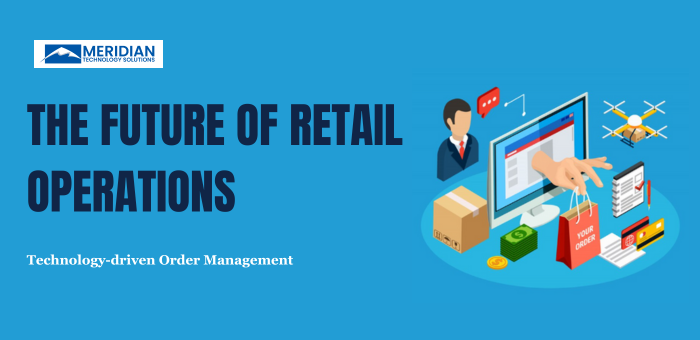OMS – Overcome Challenges of Supply Chain Management Industry
The modern supply chain industry faces many challenges, from global disruption to ever-increasing customer expectations. In such a complex and dynamic environment, an effective supply chain management system such as OMS emerges as a game-changer.
OMS – Order Management System helps businesses overcome these supply chain obstacles and compete in the market.
This blog explores the critical challenges of supply chain management and how aggressive OMS implementation can provide with significant differences. Have a look.
Before delving into the role of order management systems, let’s understand the challenges that the supply chain industry faces.
Challenges of Supply Chain Industry

- Complex Globalization and Networking
Globalization has transformed supply chains into complex networks of nations, timetables, and legal systems. Businesses often struggle to effectively manage multiple suppliers, distributors and logistics partners around the world. - Demand Volatility
Consumer demand is constantly changing, making it difficult for businesses to accurately predict demand. This can lead to problems such as stock outs, overstocking and ineffective inventory management. - Inventory Management
Balancing stock levels is a constant challenge. Too much inventory ties up capital, while too little can lead to lost sales and customer frustration. - Supply Chain Visibility
It is often invisible throughout the supply chain, from raw materials to end customers. This lack of clarity can lead to delays and inefficiencies. - Risk Management
The global supply chain is susceptible to myriad risks, including natural disasters, political instability and economic fluctuations. Managing and mitigating these risks is always a concern. - Customer Expectations
Today’s customers expect fast, accurate and simple service. Meeting these expectations is a difficult task.
The Role of Order Management System
Order Management System is a technical solution designed to manage and streamline the end-to-end order process from order planning to delivery. Its role in solving supply chain challenges is very important.

Here’s how an OMS helps overcoming challenges of supply chain industry-
- OMS Provides Increased Visibility
One of the key roles of OMS is to ensure visibility throughout the supply chain. It integrates with systems and collects data from multiple sources to develop a comprehensive view of the supply chain. This real-time visibility allows companies to make informed decisions, track orders, and aggressively manage issues. - OMS Helps in Demand Forecasting & Inventory Management
A robust OMS uses data analytics and machine learning to accurately forecast demand. By understanding historical trends and current market trends, companies can improve inventory quality, reduce inventory costs and reduce turnover. - OMS Performs Execution of Orders Correctly
The order management system automates order processing, reducing the possibility of errors and delays. This automation extends to order routing, ensuring that orders are routed to the most appropriate fulfillment center, warehouse, or vendor based on factors such as inventory availability and cost of goods. - OMS Results in Enhanced Customer Experience
Instead of using an OMS, companies can provide customers with real-time order tracking and accurate delivery forecasts. Customers appreciate this transparency, which increases satisfaction and loyalty. - OMS Reduced the Chances of Risks
Order management systems provide data that enables businesses to identify and mitigate risks. For example, if a critical resource is received from an area with political instability, the system can trigger alerts and suggest additional resource allocations. - OMS Can Easily Be Integrated with Other Systems
Modern OMS solutions can integrate with other critical systems, such as customer relationship management (CRM), enterprise resource management (ERP), and transportation systems (TMS) and this integration provides both performance and data accuracy spike.
Key Components of An Effective OMS
To truly overcome the challenges of supply chain management, companies need to choose an OMS with the right features. The most significant features include:
- Multi-channel Support
In today’s omni-channel world, OMS must support multiple sales channels including brick and mortar stores, e-commerce platforms and mobile apps. - Real-time Data Analysis
OMS should provide advanced data analytics capabilities to help businesses analyze trends, improve inventory quality and make informed decisions. - Automation & Workflow Management
The system should automate order processing, routing, and approval to minimize manual intervention. - Scalability of Performance
OMS needs to grow with your business. Ensure it can handle increasing orders and adapt to changing needs. - Resource Combination
Choose a system that can seamlessly integrate with other systems, ensuring smooth data flow and consistent information. - In Mobility Accessibility
Look for solutions that provide mobile access so orders can be processed on the go, increasing conversion and responsiveness.
Application of OMS
The company that decides to implement advanced OMS. The system allow them to:
- Automate order processing, reduce processing time by approximately 40%.
- Use real-time data analytics, resulting in a 15% reduction in stock outs.
- Increase visibility, so orders can be tracked from raw material purchase to delivery.
After implementing OMS, the company improved dramatically:
- Order accuracy and customer satisfaction increased, resulting in a 20% increase in sales.
- Inventory costs were reduced by 10% through accurate demand forecasting.
- They have strengthened disaster management, helping them avoid problems caused by regional political turmoil.
However, there are some challenges in implementation of an order management system. Did you know what these challenges are? Have a look.
Challenges in OMS Implementation
While the benefits of a procurement management system are obvious, the implementation process can be challenging. Here are some common obstacles:
- Complex Process
Integrating OMS into existing systems and processes can be complex and time-consuming. However, it is important to ensure smooth and accurate data flow. - Change Management
Employees can resist changes when using OMS. Appropriate change management strategies are essential for a smooth transition. - Cost Consideration
Investing in a robust OMS can be important. Companies must weigh the costs against the expected benefits. - Data Protection and Privacy
Managing sensitive customer order data requires strong security measures to prevent data breaches.
Hence, choosing the right OMS for your business is imperative. The system should match your specific needs and development plans. This will save you from the hurdles that you might need to face while or after implementing an order management system to your supply chain business.
Future Trends in OMS

Technological advances continue to transform the supply chain. Here are some future trends in OMS.
- AI & ML
OMS will increasingly use AI and machine learning for improved demand forecasting, risk assessment and automation. - Blockchain Integration
Blockchain technology can provide security and transparency for order processing and tracking. - IoT and Real-Time Data
The Internet of Things (IoT) enables real-time monitoring of inventory, shipments, and even the status of freight. - Sustainability – A Permanent Process
Sustainability will be an increasingly important aspect of policy implementation. OMS helps to monitor and optimize sustainable practices in the supply chain. - Enhanced UI/UX
OMS focuses on delivering an intuitive and user-friendly experience, making it easier for businesses to train their employees and be more productive.
Final Takeaway
In the dynamic and complex world of supply chain management, implementing a robust monitoring system can have a significant impact on a business’s ability to succeed and meet the needs of businesses.
As companies face the ever-evolving challenges of globalization, changing demand, and customer expectations, OMS remains a beacon of innovation. And, the flexibility of successfully implementing OMS to deliver value high, reinforces customer satisfaction, and provides strong solutions supply chain challenges.
In the coming years, we can expect OMS to become even smarter and more collaborative, playing a key role in shaping the future of supply chain management. Those who embrace this technology will be at the forefront of the industry, ready to conquer any challenge that comes their way.
If you’re in the supply chain industry, it’s time to harness the power of an effective order management system and transform your business.
For more details, get in touch.





